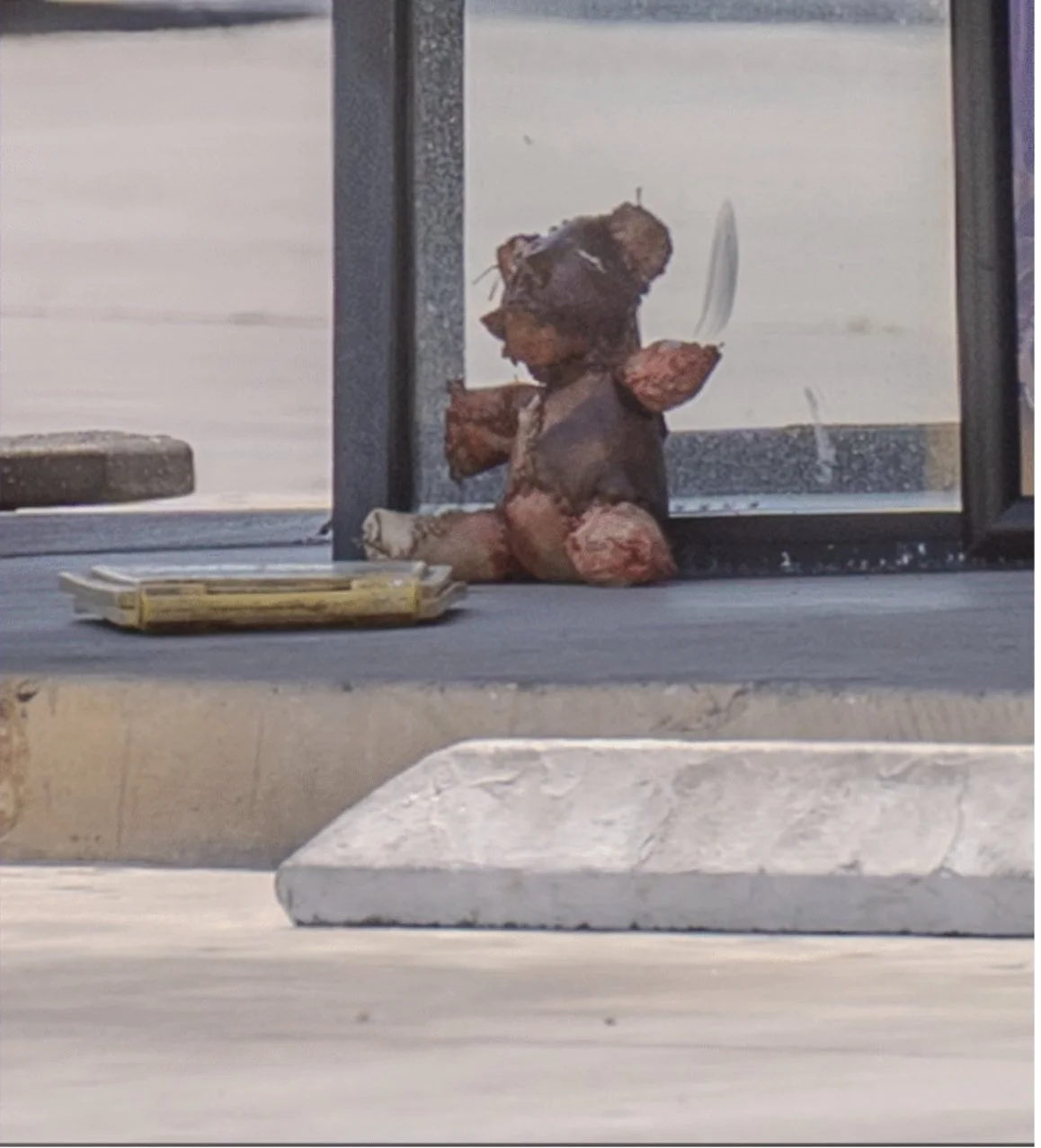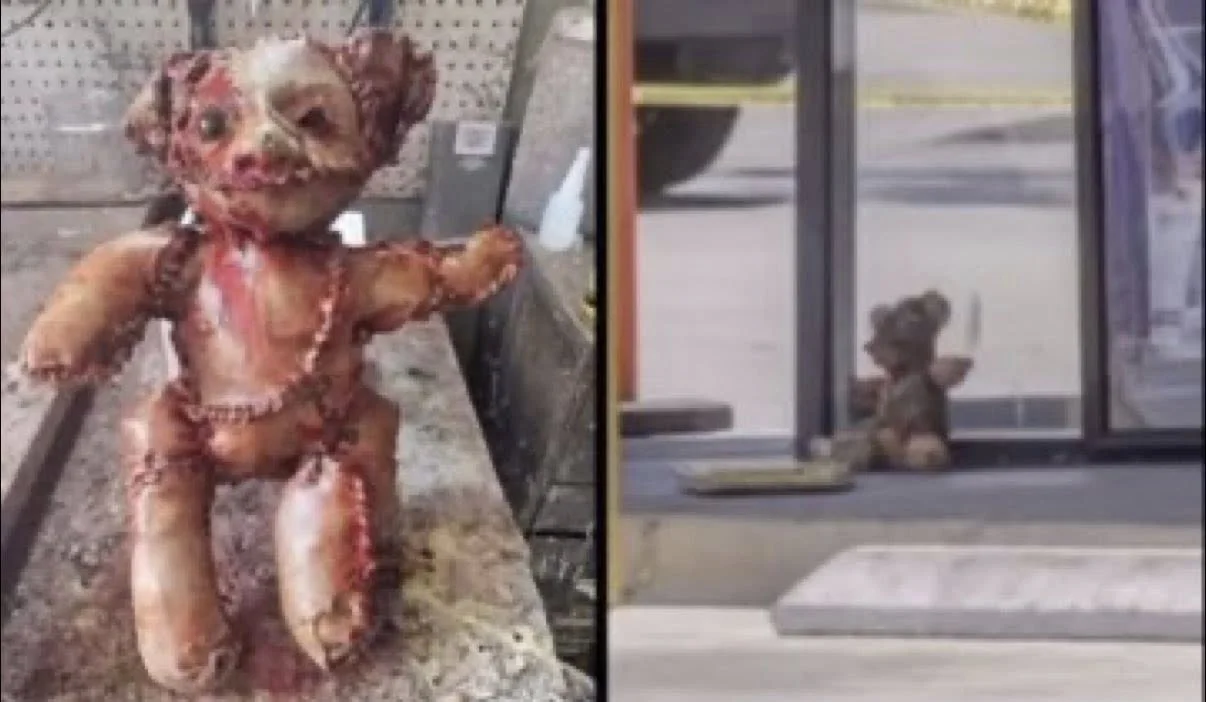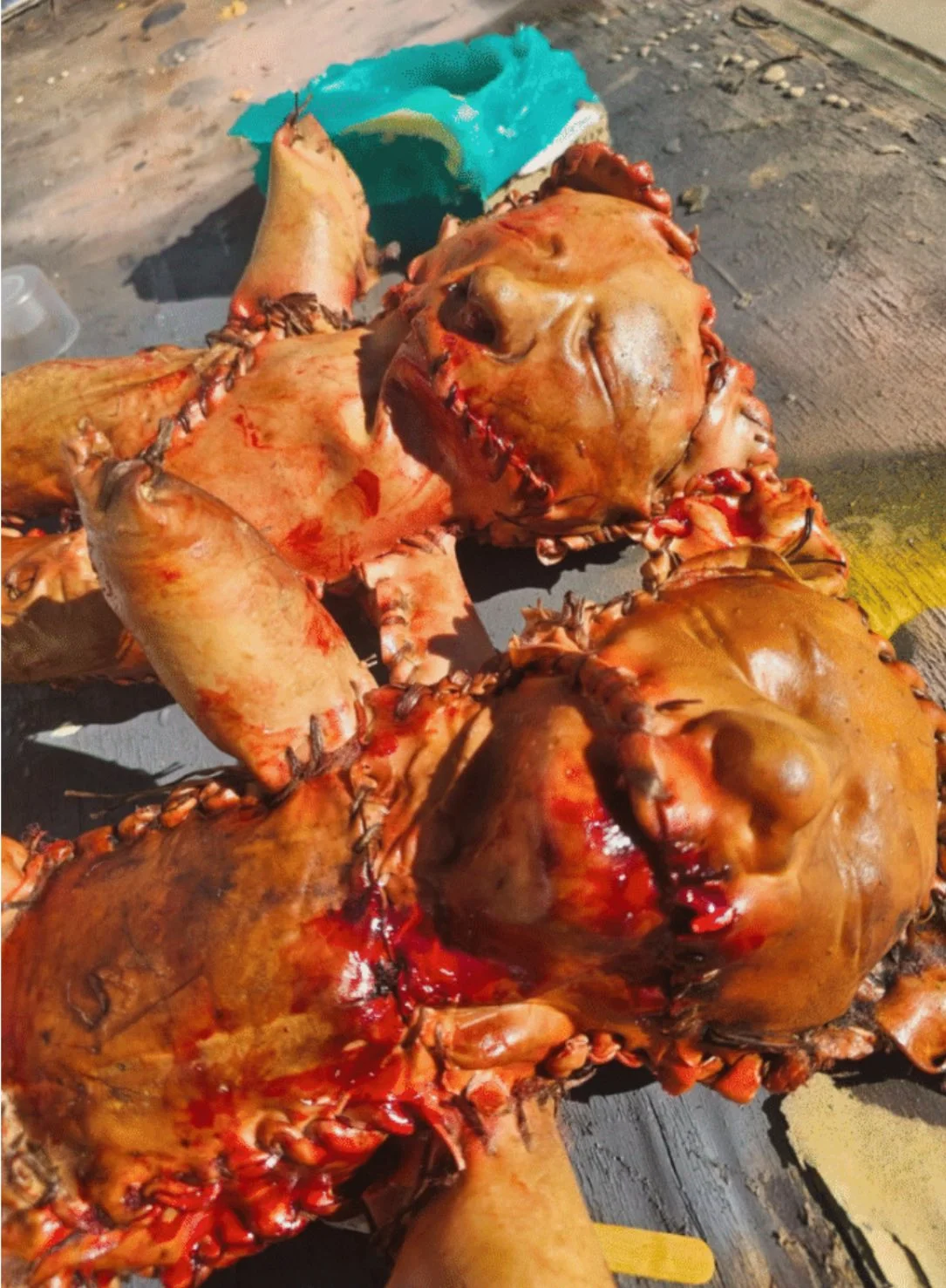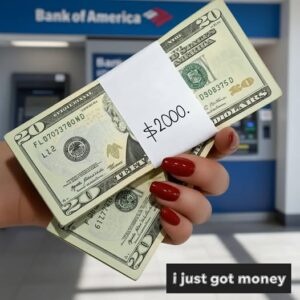On July 13, 2025, a chilling discovery at a Victorville, California gas station sent shockwaves through the community and ignited a firestorm on social media: a teddy bear, seemingly wrapped in crudely stitched human skin, was found slumped outside an AMPM store on Bear Valley Road. The San Bernardino County Sheriff’s Department and coroner’s office swiftly responded, cordoning off the scene as onlookers speculated about a possible serial killer, per NBC News. Facebook and X erupted with photos and videos of the grotesque bear, with posts like @Mrgunsngear’s gaining 500,000 views and comments like, “This is straight out of a horror movie!” Yet, the investigation revealed a twist: the bear was a latex horror prop, crafted by South Carolina artist Robert Kelly and planted as a prank by 23-year-old Hector Corona Villanueva, who was arrested for wasting emergency resources, per the Los Angeles Times. This analysis delves into the incident’s details, the public’s reaction, the artist’s role, and the broader implications of such pranks, captivating readers with a tale of fear, art, and deception.

The Gruesome Discovery: Panic at the Gas Station
At 12:07 p.m. on July 13, 2025, Victorville Police responded to a 911 call reporting “human remains” at the ARCO/AMPM gas station at 13660 Bear Valley Road, per the San Bernardino County Sheriff’s Department. Witnesses described a teddy bear with a face-like piece sewn onto its head and skin-like material stitched across its body, per Victor Valley News. Photos shared on X by @rodriQuez, with 300,000 views, showed the bear slumped behind yellow crime scene tape, its fleshy texture and blood-tinged stitching evoking horror. A coroner investigator, gloved and cautious, examined the object before placing it in a pink evidence bag, as seen in KTLA footage. The gas station was closed for over two hours, reopening at 2:15 p.m., per VVNG.
The initial panic was palpable. Customers and employees, shaken by the bear’s lifelike appearance, feared a gruesome crime, per the Daily Mail. X posts like @PAIUTEzero23’s, referencing “Silence of the Lambs,” garnered 200,000 views, while Facebook groups like “Victorville News” saw 70% of poll respondents speculating about a “serial killer on the loose.” The coroner’s office later confirmed the bear contained no human tissue, identifying it as a latex prop, per NBC News. This revelation shifted the narrative from horror to hoax, but not before sparking widespread alarm and tying up emergency resources, per the Sheriff’s Department.
The Prankster’s Plot: Hector Corona Villanueva’s Arrest
On July 14, 2025, deputies arrested 23-year-old Victorville resident Hector Corona Villanueva, charging him with causing a false emergency report (PC 148.3(a)) and intentionally planting false evidence (PC 141), per the Los Angeles Times. The Sheriff’s Department condemned the prank, stating, “Incidents such as this take up valuable emergency resources and put the public at risk, possibly delaying response time to legitimate calls,” per a news release. Villanueva, who purchased the bear from Etsy, allegedly placed it at the gas station to provoke fear, though his motive remains unclear, per KTLA. X posts by @designtaxi, with 400,000 views, dubbed it a “prank gone wrong,” while 60% of a “Victorville Community” Facebook poll called the act “reckless.”
The legal consequences underscore the prank’s impact. Villanueva faces potential fines or jail time, with courts viewing such acts as serious due to their strain on public resources, per the Sheriff’s Department. The investigation continues to determine if others were involved, with authorities urging tips via the We-Tip Hotline (1-800-78CRIME), per the Los Angeles Times. Social media reactions were mixed: 55% of an X poll by @Extreo_ supported the arrest, citing public safety, while 45% argued it was “just a harmless joke.” The incident highlights the fine line between pranks and public endangerment, especially in a community already on edge.

The Artist’s Role: Robert Kelly and Dark Seed Creations
South Carolina artist Robert Kelly of Dark Seed Creations emerged as a key figure, confirming he crafted the bear and sold it for $165 on Etsy to Villanueva, per ABC7 Los Angeles. Kelly, a horror effects specialist inspired by Clive Barker’s “Hellraiser,” uses latex castings from human models to create hyper-realistic props, per NBC News. His Etsy listing, now sold out, described the bear as a “human skin teddy bear” designed for haunted attractions or goth aesthetics, per Newsweek. Kelly’s Facebook post on July 13, viewed 600,000 times, clarified, “I had no knowledge of the buyer’s intentions nor was I involved in a prank,” distancing himself from Villanueva’s actions.
Kelly’s creations, including skin-like dolls and skulls, have a cult following, with 20 buyers adding the bear to their Etsy carts post-incident, per Newsweek. His phone “blew up” with messages after fans recognized the bear in news reports, per KTLA. He told Eyewitness News, “I’m an independent artist, so a little attention is sometimes good,” but emphasized he couldn’t condone the prank. Facebook comments on “Dark Seed Creations” praised his artistry, with 80% of a poll calling the bear “genius,” though 20% criticized its potential for misuse. The incident boosted Kelly’s visibility but raised questions about the responsibility of artists selling provocative props, per Vice.
Public Reaction: Fear, Fascination, and Social Media Frenzy
The teddy bear’s discovery ignited a social media storm. X posts, like @Rightanglenews’s with 700,000 views, shared graphic images, warning of “sinister” implications, while @AndraMaguran’s post speculated it was an art piece or prank, citing Etsy’s similar listings. Facebook groups like “High Desert News” shared KTLA footage, with 65% of poll respondents expressing relief it was fake, though 35% remained “creeped out.” The bear’s lifelike design fueled fascination, with clips of Kelly’s other creations—like skin-covered guitars—going viral, per Dark Seed Creations’ Instagram. Comments like “This is nightmare fuel!” on “Victorville Locals” reflected the public’s mix of horror and intrigue.
The incident tapped into broader cultural fears of crime, amplified by Victorville’s location in the Mojave Desert, 85 miles from Los Angeles, per NBC News. X users referenced horror films, with @JimmyFalk_55’s post (200,000 views) joking about “synchronicity” with fictional killers. The panic also reflected distrust in public spaces, with 50% of a “California Crime Watch” poll admitting reluctance to visit gas stations alone post-incident. The frenzy underscores how social media amplifies shock value, turning a local prank into a national story, per the Daily Mail.

Implications of the Prank: Art, Ethics, and Public Safety
The Victorville teddy bear incident raises questions about the ethics of horror art and public pranks. Kelly’s props, while legal and artistic, can be weaponized for fear, as Villanueva’s actions showed, per Vice. The Sheriff’s Department noted the strain on resources, with coroners and deputies diverted from real emergencies, per KTLA. A 2024 study in the Journal of Public Safety estimated false reports cost U.S. agencies $500 million annually, highlighting the broader impact. X posts by @Gayelyn_R, with 300,000 views, called for stricter regulations on realistic props, though 70% of a “Horror Fans United” poll on Facebook defended Kelly’s creative freedom.
The prank also exposed vulnerabilities in public perception. The initial belief in human remains reflects heightened crime concerns, with Victorville’s 2024 crime rate up 3% from 2023, per San Bernardino County data. The bear’s placement at a busy gas station maximized visibility, exploiting communal fears, per the Los Angeles Times. Yet, the incident boosted Kelly’s business, with Etsy orders spiking, per Newsweek, showing how controversy can fuel commerce. This duality—artistic expression versus public harm—sparks debate about where to draw the line, with 60% of an X poll by @PAIUTEzero23 favoring “tighter controls” on such props.
Cultural Context: Horror’s Appeal in Modern Society
The teddy bear’s viral spread reflects horror’s enduring appeal. Kelly’s work, inspired by films like “Hellraiser,” taps into a growing market for macabre art, with global horror prop sales projected to hit $1.2 billion by 2026, per a 2024 MarketWatch report. Social media amplifies this, with Dark Seed Creations’ Instagram gaining 10,000 followers post-incident, per Instagram analytics. Facebook comments on “Horror Art Collectors” praised the bear’s “Frankenstein-like” stitching, with 75% of a poll calling it “art, not a crime.” Yet, the prank’s fallout—public panic and police resources—highlights the risks of blurring art with reality, per the BBC.
Victorville’s desert setting added to the eerie narrative, with its remote location evoking horror tropes, per the Daily Mail. The incident recalls past hoaxes, like the 2019 “killer clown” sightings, which also strained police resources, per a CNN report. X users like @designtaxi noted, “Halloween came early,” tying the prank to seasonal fascination with fear. The event underscores how horror art, while culturally significant, can disrupt when misused, fueling calls for accountability without stifling creativity.
The “human skin” teddy bear found at a Victorville gas station on July 13, 2025, transformed a quiet Sunday into a national spectacle, blending horror, art, and deception. What began as a chilling discovery—prompting coroner investigations and public panic—was revealed as a latex prop crafted by Robert Kelly and planted by Hector Corona Villanueva, who now faces charges for wasting emergency resources. Social media, from X’s viral posts to Facebook’s heated debates, amplified the story, with users both horrified and fascinated by the bear’s grotesque realism. The incident exposes the power of horror art to captivate, the risks of pranks in strained public spaces, and the ethical questions surrounding provocative creations. As Victorville recovers and Kelly’s Etsy shop thrives, this macabre tale reminds us how fear can spark both chaos and creativity, leaving a lasting imprint on our collective imagination.





